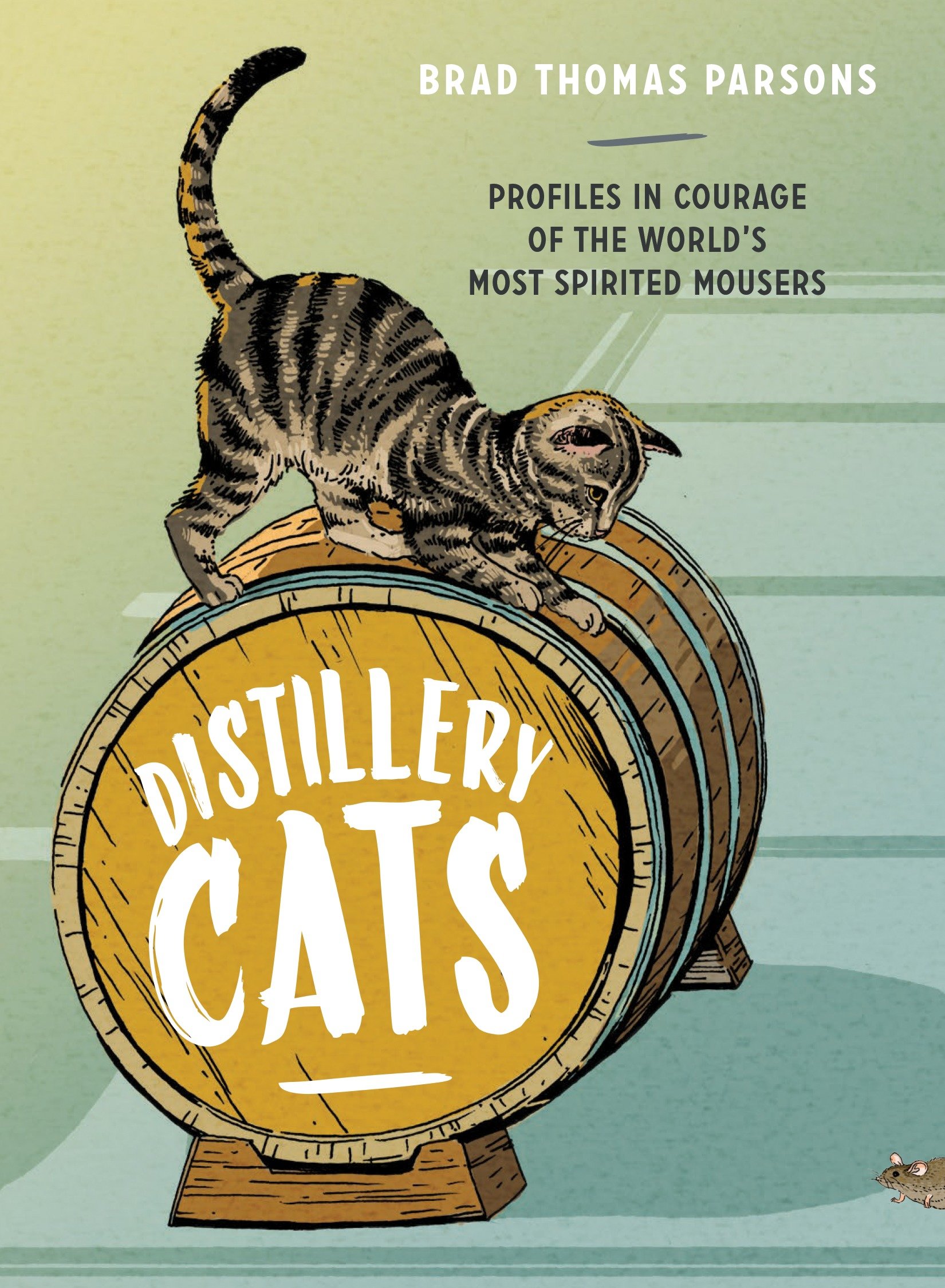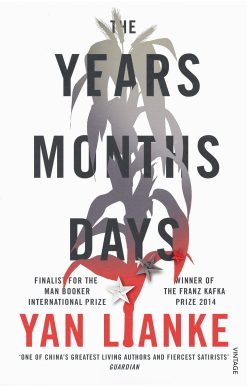Distillery Cats: Profiles in Courage of the World’s Most Spirited Mousers
| by |
|---|
13.00 JOD
Please allow 2 – 5 weeks for delivery of this item
Description
Distillery Cats contains the whimsical tales of working cats in distilleries around the world, with charming illustrations of the beloved mousers. Distillery Cats cheekily tells the tale of the historical role of these spirited cats and their evolution from organic pest control to current brand ambassadors. James Beard Award-winning author (and noted cat enthusiast) Brad Thomas Parsons profiles 30 of the world’s most adorable and lovable distillery cats, featuring “interviews,” a hand-drawn portrait of each cat, plus trading card-style stat sheets with figures like “super-power” and “mice killed.” Featuring 15 cocktail recipes to enjoy while you page through, Distillery Cats is a quirky but essential addition to any cat or spirits lover’s bookshelf.
Additional information
| Weight | 0.32 kg |
|---|---|
| Dimensions | 1.53 × 14.48 × 19.82 cm |
| PubliCanadanadation City/Country | USA |
| by | |
| Format | Hardback |
| Language | |
| Pages | 112 |
| Publisher | |
| Year Published | 2017-9-19 |
| Imprint | |
| ISBN 10 | 1607748975 |
| About The Author | Brad Thomas Parsons is the author of Amaro: The Spirited World of Bittersweet, Herbal Liqueurs and Bitters: A Spirited History of a Classic Cure-All, which was the winner of the James Beard and IACP Cookbook Awards, and a finalist for the Tales of the Cocktail Spirited Awards. Parsons received an MFA in writing from Columbia University, and his work has appeared in Bon Appétit, Lucky Peach, Food & Wine, Travel + Leisure, Punch, and more. He lives in Brooklyn, New York. Visit http://www.btparsons.com. |
“Brad’s reporting on distillery cats actually moved me to take a tour of Scottish distilleries, microphone in hand, to meet some of the mousers in person. (And sample some of the product.) It was a hardship assignment, and I couldn’t keep at it for long. I am relieved to know that Brad has remained committed to the mission.”—Ari Shapiro, host of NPR’s All Things Considered"The Best Food Book of the Year […] Award-winning drinks writer Brad Thomas Parsons put together a collection of the country's most distinguished cats in a hilariously illustrated book that belongs on your shelf next to the Modernist Cuisine box set. […] So do yourself a favor for once and pick up this book. It has everything! Cats, beer, whiskey, love lost and found, journeys of self discovery and redemption, heroes and villains, tabbies and gingers, hell, even a few scratches on the head. If you're looking for more than that in a book, good luck finding it."—Alex Beggs, Bon Appetit“Cats + Booze! Brad Thomas Parsons has channeled his inner cat lady to discover the ultimate formula for happiness.”—Kerry Diamond, Cherry Bombe“Cats! Cool illustrations! Great stories! Cocktail recipes! What’s not to love about this book? Did I mention cats?”—Andy Ricker, chef/owner of Pok Pok"From shipyards to book-stores, there's a storied tradition of employing cats in the workforce. In his new release, Brad Parsons sheds light on the distillery cats, charged with the safe-keeping of expensive grain at craft distilleries and breweries across the country. Nowadays, they're more than mere workers–the felines have evolved into social media darlings, at times amassing a larger following than the distillery."—The Local Palate“Parsons, the sharp author of Bitters and Amaro, clearly understands that the conceit is what it is, but he’s slyly found meta-stories behind the various cat profiles: brewers and distillers, mensches that they are, are not only willing to adopt strays and shelter cats but could also teach Andrew Lloyd Webber a thing about naming of cats (Daryl Hall, Old Horatio). And you’ll likely discover a lot more distilleries around the country (Port Chester, N.Y., Nashville, Tenn.) than most of us know. Beyond that? Look, it’s a book about cats. But Parsons throws some not-obvious cocktail recipes to sweeten the pot, rendering this a new classic of a very particular genre.” —PUNCH"At BevCon in Charleston this year, the most buzzed-about new book among spirits professionals was Distillery Cats by Brad Thomas Parsons (Amaro, Bitters), which is darn cute, yes, but there's plenty of history behind the practice as well as important reasons for having a cat live at your bar, brewery or distillery."—Amy Cavanaugh, Plate |
|
| Table Of Content | 7 Automatic8 Black Hawk & Chinook11 Boone 12 FERNETSCAPE NAVIGATOR14 Brewery Cat17 Brewster18 Castor 20 IDLE REVOLVER23 Char 24 CHAR’S CHERRY SMASH26 Cho 28 GIN JULEP31 Cooper 32 IRONWEED BOULEVARDIER34 Copper 36 FALL FASHIONED39 Cork 40 CELERY TONIC42 Daryl Hall44 The DuClaws: HellRazer, Mosaic, Bock & Simcoe49 Fletcher Pickles 50 BATTLE OF OL’ CHARLIE53 Gangsta Cat54 General Patton 56 PATTON PARFAIT59 Hancock & Hemingway 60 SHORT NORTH PAWSEE62 Hoodie65 Hops66 James69 Jeffy 70 WATERMELON PUNCH72 Leland Murphy75 Masher & Two-Row 76 Old Horatio79 Pepper 80 A BARN CAT NAMED PEPPER82 Pizza 84 GIN’S GOTTA NICE PEAR87 Scratchy88 Sugar Maple 90 CATERWAUL93 Venkman94 Verbal 96 BLOODY MANHATTAN98 Syrups |
| Excerpt From Book | INTRODUCTIONFor centuries, cats have been punching the clock, helping out humans with odd jobs at the workplace. Granted, “helping” may be too generous a word to use when talking about an animal known to sleep up to twenty hours a day. When they are awake, cats tend to keep to their own schedule and rituals, relying on humans for food, water, and clean litter boxes while doling out warmth and affection at their own whimsy.When pawing through the Help Wanted ads, cats could find a number of job opportunities they might easily qualify for with little or no experience. There are shop cats who earn their keep curling up in chairs, sprawling on counters, and watching passersby from windows at a wide variety of business establishments, including dry cleaners, real estate offices, florists, and liquor stores. Bookstore cats have a pretty nice life, sleeping among the stacks or curling up in a beam of sunlight in the window display, greeting customers in exchange for a quick scratch or extended petting session. Scrappy bodega cats, the feline denizens of urban corner groceries and convenience stores, have become increasingly well-known in recent years, primarily thanks to social media; their country cousins, pastoral barn cats, have been climbing rafters, mingling with chickens, and napping upon stacks of hay for generations. And then there is the major subcategory of spirited cats, the bar cat, a storied tradition in pubs across the United Kingdom.While having a charming cat lazing about keeping the shopkeeper company and casually greeting patrons is reason enough to employ one, the historic origin of the feline workforce is primarily in pest control. Dr. Fiona Marshall, a professor of archeology at Washington University in St. Louis, Missouri, wrote a study on the historical domestication of cats and in a 2013 interview with Audie Cornish on NPR’s All Things Considered notes that while dogs were drawn to humans by the scraps of food they were offered and by the sight of humans hunting, cats, on the other hand, were interested in the by-product of what farmers were growing—the rodents eating the grain.Enter the distillery cat. (To clarify, I’m using distillery cat as an umbrella term that covers brewery cats as well as winery and vineyard cats—the cats that protect our spirits at the source.) For distillers and brewers, wheat, barley, rye, and corn are expensive cash crops, vital to the production of their spirits. For a mouse, rat, or bird, a distillery or brewery may as well be a twenty-four-hour all-you-can- eat buffet. A distillery cat’s primary qualifications are to be friendly yet possess the instincts of a cold-blooded killer. In the ongoing battle between cat and mouse, mice are typically pretty quick on the uptake when a distillery cat comes on the scene. After seeing their brothers and sisters go missing in action, mice seek a new venue in which to pester and pilfer to avoid winding up on the hit list.Historically, Ireland and Scotland have a keen tradition of keeping distillery cats on the payroll and are home to some of the most legendary mousers. A long-haired tortoiseshell dubbed Towser the Mouser lived her twenty-four years at the Glenturret Distillery, Scotland’s oldest working distillery, where she ended her career with an estimated kill list of 28,899 mice, giving her the honor of being the Guinness Book of World Records “World Mousing Champion.” The staff at Dublin’s Jameson Distillery was so enamored of their distillery cat, Smitty, that they had him stuffed after his death. He’s still on display, positioned atop the rafters of the barley room, posthumously greeting visitors and serving as a deterrent to the local mouse population.In America, as the boom in craft distilleries and breweries continues to spread across the country, there’s a new breed of distillery cats stepping into the spotlight. While these first-generation mousers are delivering on their primal instinct and keeping their homes free of mice, they’re also earning their bones in the age of Instagram. These unofficial mascots have become full-fledged brand ambassadors and social-media stars, with many possessing their own dedicated accounts and cat handlers. Their workdays are chronicled online, and taking a selfie with the house distillery cat has become as much a part of the tour experience as free samples of booze. While they still maintain their fiercely independent nature, when they’re not sleeping, hunting, or supervising the staff, the modern distillery cat spends a good chunk of the day mingling with patrons in the tasting room.While the cats are beloved by most, the looming concern over just how sanitary it is to have them on premises at a distillery or brewery does come up. Some cats have been vetted and approved by the local authorities from the county health department, while others have to keep out of the production facility and stay in the front office. I didn’t want to rat out any under-the-radar distillery cats, but when I asked distilleries and breweries about this and if there were any particular state laws on the subject, the replies were an equal amount of shrugs, pleading the Fifth, and a repeated refrain of “don’t ask, don’t tell,” although distilleries and breweries that offer food were quick to point out that the cat isn’t allowed in the food production area. At most distilleries and breweries, the grain is stored in heavy sacks (which the cat can protect and sleep on, but not eat), and the rest of production—including the grain crusher, kettle, and fermenter—is part of a closed system to maintain a sterile environment.As an animal lover and longtime cat enthusiast, I will always look the other way in regard to anti-feline ordinances and immediately grab my phone to take a photo when I see a cat hanging out atop a bar or sprawled across a pile of oranges at my local bodega, and the same goes for distilleries. I started the @DistilleryCats Instagram account to chronicle and celebrate the spirited tradition of working cats at distilleries, breweries, wineries, bars, pubs, cafés, and liquor stores. In these pages, you’ll read the stories, exploits, and adventures of some of the breakout stars of the new pedigree of American cats embracing their role as guardians of the grain and accidental Internet stars. All cats in the book represent first-generation distillery cats, and nearly all were adopted, rescued from a shelter, abandonment, or life on the streets. The “adopt-don’t-shop” ethos supporting animal shelters is strong in this community, and there are amazing groups across the country with a mission to match up members of feral cat colonies with appropriate workplaces like distilleries and breweries as well as warehouses and farms. Hearing about these cats’ Dickensian pasts and seeing so many get a second chance at life—and to be loved with abandon—is the most meaningful part of the distillery-cat experience for me. Watching them develop into superstars with their own dedicated fan base is just a perk. Plus, what’s not to love about the combination of cats and booze? Let’s raise a glass of the good stuff (and pour out a saucer of milk) to distillery cats everywhere. |
Only logged in customers who have purchased this product may leave a review.
Related products
-
On backorder 2-5 Weeks to Arrive
7.99 JOD -
On backorder 2-5 Weeks to Arrive
10.99 JOD -
On backorder 2-5 Weeks to Arrive
15.99 JOD -
On backorder 2-5 Weeks to Arrive
12.99 JOD






Reviews
There are no reviews yet.